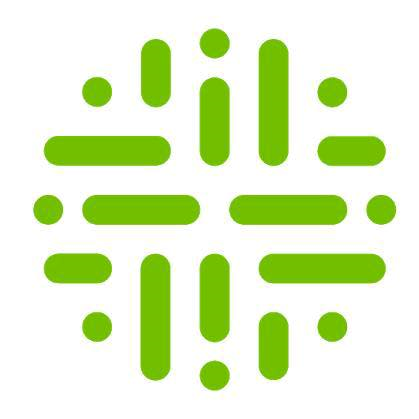The Future of Enterprise Architecture: Bridging Gaps with Smart Integrations
June 7, 2025, 5:02 am

Location: Belgium, Brussels-Capital, Neder-Over-Heembeek
Employees: 501-1000
Founded date: 2008
Total raised: $593.5M
In the fast-paced world of technology, change is the only constant. Companies are racing to modernize their infrastructures, especially as artificial intelligence (AI) and high-performance computing (HPC) reshape the landscape. Two recent developments highlight this trend: Align's expansion in data center assessments and Ardoq's integration with Lucid Software. Both aim to streamline processes and enhance readiness for the future.
Align has made waves by enhancing its Data Center Assessments & Modernization practice. With the addition of industry veterans Jakob Steinmetz and Jason Bishop, Align is poised to help enterprises navigate the complexities of AI workloads. The pressure to modernize is palpable. Companies must adapt their data centers to meet the demands of AI, which often pushes traditional infrastructures to their limits.
Steinmetz brings a wealth of experience in site selection and infrastructure assessment. His expertise will guide clients in evaluating their current setups. The goal? To determine whether to retrofit existing facilities or migrate to new, AI-ready environments. This decision is not just about technology; it’s about aligning people, processes, and tools to drive business outcomes.
On the other hand, Ardoq is tackling the visual disconnect in enterprise architecture. Their recent integration with Lucidchart offers a solution to a common problem: the disconnection between data, diagrams, and execution. Architects often find themselves working with tools that don’t communicate. Diagrams become outdated, and project teams lack visibility into the architecture context. This integration bridges that gap.
With Ardoq and Lucidchart working in tandem, architecture teams can visualize change and understand dependencies. The integration allows for real-time collaboration, enabling architects and project managers to work together seamlessly. Diagrams can be generated from a central source of truth, ensuring that all stakeholders are on the same page.
One of the standout features of this integration is its ability to maintain architectural integrity. Changes made in Lucidchart do not automatically alter the core data model in Ardoq. This safeguard is crucial for maintaining strong data governance practices. It allows teams to explore and visualize changes without compromising the underlying architecture.
Flexibility is another key aspect of this integration. Organizations communicate architecture insights in various ways. By integrating Ardoq data into Lucidchart, teams can tailor visuals to fit their unique communication styles. Whether it’s detailed system diagrams or high-level transformation roadmaps, the integration supports diverse needs.
As companies embark on digital transformation journeys, the need for effective collaboration tools becomes paramount. The Ardoq and Lucidchart integration supports round-trip collaboration. Teams can design solutions in Lucidchart and then import those diagrams into Ardoq’s Scenarios feature. This allows for informed planning without affecting live architectural views.
Future enhancements promise to make this integration even more powerful. Bidirectional design workflows will enable users to bring visual context from Lucidchart back into Ardoq in a structured way. This will include approval and merge logic, ensuring that changes are controlled and aligned with the overall architecture.
The implications of these developments are significant. As organizations strive to become more agile and responsive, the ability to visualize and manage change effectively is crucial. Align’s focus on AI infrastructure readiness and Ardoq’s commitment to bridging the gap in enterprise architecture are steps in the right direction.
In a world where data is king, the ability to manage and visualize that data is essential. Align’s Asset Point platform plays a pivotal role in this process. It provides unparalleled visibility into technology assets, enabling clients to assess capacity and model scenarios. This proactive approach to infrastructure management drives efficiency and reduces risk.
The integration of Ardoq and Lucidchart complements this vision. By allowing teams to collaborate in real-time and visualize changes grounded in live data, organizations can navigate the complexities of digital transformation with confidence. The future of enterprise architecture is not just about tools; it’s about creating a cohesive ecosystem that supports innovation and agility.
As we look ahead, the need for modernization will only grow. Companies must be prepared to adapt to the evolving demands of AI and HPC. Align and Ardoq are leading the charge, providing the tools and expertise necessary for organizations to thrive in this new landscape.
In conclusion, the integration of smart technologies and methodologies is reshaping the enterprise architecture landscape. Align’s enhancements and Ardoq’s integration with Lucid Software exemplify the shift towards a more connected, efficient, and responsive approach. As businesses embrace these changes, they will be better equipped to meet the challenges of tomorrow. The future is bright for those who are ready to innovate and adapt.
Align has made waves by enhancing its Data Center Assessments & Modernization practice. With the addition of industry veterans Jakob Steinmetz and Jason Bishop, Align is poised to help enterprises navigate the complexities of AI workloads. The pressure to modernize is palpable. Companies must adapt their data centers to meet the demands of AI, which often pushes traditional infrastructures to their limits.
Steinmetz brings a wealth of experience in site selection and infrastructure assessment. His expertise will guide clients in evaluating their current setups. The goal? To determine whether to retrofit existing facilities or migrate to new, AI-ready environments. This decision is not just about technology; it’s about aligning people, processes, and tools to drive business outcomes.
On the other hand, Ardoq is tackling the visual disconnect in enterprise architecture. Their recent integration with Lucidchart offers a solution to a common problem: the disconnection between data, diagrams, and execution. Architects often find themselves working with tools that don’t communicate. Diagrams become outdated, and project teams lack visibility into the architecture context. This integration bridges that gap.
With Ardoq and Lucidchart working in tandem, architecture teams can visualize change and understand dependencies. The integration allows for real-time collaboration, enabling architects and project managers to work together seamlessly. Diagrams can be generated from a central source of truth, ensuring that all stakeholders are on the same page.
One of the standout features of this integration is its ability to maintain architectural integrity. Changes made in Lucidchart do not automatically alter the core data model in Ardoq. This safeguard is crucial for maintaining strong data governance practices. It allows teams to explore and visualize changes without compromising the underlying architecture.
Flexibility is another key aspect of this integration. Organizations communicate architecture insights in various ways. By integrating Ardoq data into Lucidchart, teams can tailor visuals to fit their unique communication styles. Whether it’s detailed system diagrams or high-level transformation roadmaps, the integration supports diverse needs.
As companies embark on digital transformation journeys, the need for effective collaboration tools becomes paramount. The Ardoq and Lucidchart integration supports round-trip collaboration. Teams can design solutions in Lucidchart and then import those diagrams into Ardoq’s Scenarios feature. This allows for informed planning without affecting live architectural views.
Future enhancements promise to make this integration even more powerful. Bidirectional design workflows will enable users to bring visual context from Lucidchart back into Ardoq in a structured way. This will include approval and merge logic, ensuring that changes are controlled and aligned with the overall architecture.
The implications of these developments are significant. As organizations strive to become more agile and responsive, the ability to visualize and manage change effectively is crucial. Align’s focus on AI infrastructure readiness and Ardoq’s commitment to bridging the gap in enterprise architecture are steps in the right direction.
In a world where data is king, the ability to manage and visualize that data is essential. Align’s Asset Point platform plays a pivotal role in this process. It provides unparalleled visibility into technology assets, enabling clients to assess capacity and model scenarios. This proactive approach to infrastructure management drives efficiency and reduces risk.
The integration of Ardoq and Lucidchart complements this vision. By allowing teams to collaborate in real-time and visualize changes grounded in live data, organizations can navigate the complexities of digital transformation with confidence. The future of enterprise architecture is not just about tools; it’s about creating a cohesive ecosystem that supports innovation and agility.
As we look ahead, the need for modernization will only grow. Companies must be prepared to adapt to the evolving demands of AI and HPC. Align and Ardoq are leading the charge, providing the tools and expertise necessary for organizations to thrive in this new landscape.
In conclusion, the integration of smart technologies and methodologies is reshaping the enterprise architecture landscape. Align’s enhancements and Ardoq’s integration with Lucid Software exemplify the shift towards a more connected, efficient, and responsive approach. As businesses embrace these changes, they will be better equipped to meet the challenges of tomorrow. The future is bright for those who are ready to innovate and adapt.
